JOHANNES BARBARUS (13 resultados)
Tipo de artículo
- Todo tipo de artículos
- Libros (13)
- Revistas y publicaciones
- Cómics
- Partituras
- Arte, grabados y pósters
- Fotografías
- Mapas
-
Manuscritos y
coleccionismo de papel
Condición
Encuadernación
Más atributos
- Primera edición (8)
- Firmado (1)
- Sobrecubierta
- Con imágenes del vendedor
- Sin impresión bajo demanda (11)
Gastos de envío gratis
Ubicación del vendedor
Valoración de los vendedores
-
Pomponii Melae Geographiae libri tres (1520) [LeatherBound]
Año de publicación: 2023
Librería: True World of Books, Delhi, India
Libro Impresión bajo demanda
LeatherBound. Condición: NEW. LeatherBound edition. Condition: New. Reprinted from 1520 edition. Leather Binding on Spine and Corners with Golden leaf printing on spine. Bound in genuine leather with Satin ribbon page markers and Spine with raised gilt bands. A perfect gift for your loved ones. NO changes have been made to the original text. This is NOT a retyped or an ocr'd reprint. Illustrations, Index, if any, are included in black and white. Each page is checked manually before printing. As this print on demand book is reprinted from a very old book, there could be some missing or flawed pages, but we always try to make the book as complete as possible. Fold-outs, if any, are not part of the book. If the original book was published in multiple volumes then this reprint is of only one volume, not the whole set. Sewing binding for longer life, where the book block is actually sewn (smythe sewn/section sewn) with thread before binding which results in a more durable type of binding. Pages: 124.
-
De situ orbis ([ca. 1515]) [LeatherBound]
Año de publicación: 2023
Librería: True World of Books, Delhi, India
Libro Impresión bajo demanda
LeatherBound. Condición: NEW. LeatherBound edition. Condition: New. Reprinted from [ca. 1515] edition. Leather Binding on Spine and Corners with Golden leaf printing on spine. Bound in genuine leather with Satin ribbon page markers and Spine with raised gilt bands. A perfect gift for your loved ones. NO changes have been made to the original text. This is NOT a retyped or an ocr'd reprint. Illustrations, Index, if any, are included in black and white. Each page is checked manually before printing. As this print on demand book is reprinted from a very old book, there could be some missing or flawed pages, but we always try to make the book as complete as possible. Fold-outs, if any, are not part of the book. If the original book was published in multiple volumes then this reprint is of only one volume, not the whole set. Sewing binding for longer life, where the book block is actually sewn (smythe sewn/section sewn) with thread before binding which results in a more durable type of binding. Pages: 132.
-
KOLMNURK - Estonian avant garde.
Año de publicación: 1921
Librería: Le Grand Verre, Villejuif, Francia
Couverture souple. Condición: Assez bon. Tallinn, 1921. Kirjastus Akt. Selts « Varrak ». Un volume broché au format 135X177mm, 80 pages. Couverture illustrée. Quelques taches, une référence à l encre page 80 : voir les 5 photos.
-
Kolmnurk : (1910-1920) : valik luuletusi kolmest ilmunud kogust, eelsõna, introduktsiooni ja nekro-epiloogiga (Triangle : (1910-1920) : Selection of poems from three published volumes, including foreword, introduction and necrology-epilogue)
Publicado por Varrak, Tallinn, 1921
Librería: Baltic Bouquiniste, Tallinn, Estonia
Libro Original o primera edición
Soft cover. Condición: Near Fine. 1st Edition. Estonian language. Octavo 14 x 18 cm. Weight 90 gr. Wrappers, 80 pp. The Book is in Near Fine condition without any visible defects, losses, remarks and stains. Fore-edge of front cover is slightly worn, cover shows some color fading at edges, damaged spine ends; internally small damp stain on the upper corner of few sheets in the middle of the book. Current the first antology by Barbarus includes verses from his first three published collections written during 1910-1920. These are debut neo-romantist Fata Morgana (1918), expressionist Inimene ja sfinks ( Man and the Sphinx , 1919) and Katastroofid ( Catastrophes , 1920). Author s poetry of this period expresses sensuatily and pathos of pleasures glorification, which had broken existed literary traditions and morality. Though he didn t directly participate in politics in the beginning, his left-wing thinking undoubtedly influenced his work. Social and political topics, such as the problem of the poor and the rich, corruption in urban descriptions, a wish for a better time and era, created by the working class people, depicted in poet s verses. According to author, this anthology is meant to build up the wall between the past and the future of his creative process. The expressionist period of creation was over, and gave way to more philosophical and allegorical poems. With unattributed avant-garde cover design, which manner of typography and the style is typical for Ado Vabbe, who created all the Barbarus books designs of that period. Johannes Barbarus (real name Johannes Vares) (1890-1946) was prominent Estonian avant-garde poet, doctor, and politician. He was a radical socialist impressed with the initial ideals of the Soviet Union. He published fourteen collections of poems, which style varied greatly during his literary career: early expressionist circles followed by avant-garde collections, which had been replaced by socialist realism works. After the fall of the bourgeois regime in Estonia he became, in June 1940, prime minister of the people s government and, in July 1940, president of the Presidium of the Supreme Soviet of the Estonian SSR (1940-46). In 1946 he committed suicide. Ado Vabbe (1892-1961) was one of the most famous Estonian avant-garde artists.
-
Katastroofid. (1919-1920). [Disasters. (1919-1920).]
Publicado por Auringo (Mattieseni), Tallin, 1920
Original o primera edición
First edition. With publisher's vignette on half title. In original, illustrated wrappers, designed by Aleksander Mülber. 63, (1) p. Johannes Vares (1890-1946) was an Estonian avant-garde poet and politician. . Untrimmed. Entry of ownership on title page. In fine condition. In original, illustrated wrappers, designed by Aleksander Mülber First edition. With publisher's vignette on half title.
-
Maailm on lahti! : VII kogu värsse : 1927 - 1930 (The World is Open! : 7th Verses Collection : 1927 - 1930)
Publicado por Tallinna Eesti Kirjastus-Ühisus (Estonian Joint Publishing), Tallinn, 1930
Librería: Baltic Bouquiniste, Tallinn, Estonia
Libro Original o primera edición
Soft cover. Condición: Near Fine. 1st Edition. Estonian language. Octavo 14 x 20 cm. Weight 210 gr. Wrappers, 121 [1] pp., plus frontispiece leaf. The Book is in Near Fine condition without any visible defects, losses, remarks and stains. Some foxing spots on the cover and on the frontispiece leaf edges, little wrapped cover corners, light rubbing to the front cover edges, inside is perfect preservation (please see images). The motif of "the world is open" gave title to the present poetry collection. Here the author interferes in 20th century life, displaying a global grasp, and embracing the whole world (trains, stations, buses, aeroplanes and other contemporary technological achievements). Poetry is constantly on the move, man rushes from city to city, from the town to the open world: London, Moscow, Leningrad, Venice, Paris. Describing the relations between man and city that bring about a change of mentality, poet makes use of images from nature, especially poeticising small towns (e.g., "Cycle of a Small Town"). An original nature verse emerges where the old opposition between country/nature and town is clearly felt. Poet is more open and stands closer to nature (e.g., the cycle "Anno Domini"). His usage of words and form indicates an expressionist background. Using new (modern) means of expression, he showed the novelty of his thinking. Barbarus employed unusual comparisons and images, the choice and usage of words is highly uncommon, and this very process made him the conscious creator of Estonian urban poetry. Johannes Barbarus (real name Johannes Vares) (1890-1946) was Estonian greatest modernist poet, doctor and politician. His style of verses varied greatly during his career as a poet. His early works followed the trends of French expressionism and Cubism, later poetry took more realistic turn. Though he didn t directly participate in politics in the beginning, his left-wing thinking undoubtedly influenced his work. He was a radical socialist and was impressed with the initial ideals of the Soviet Union. His travel experiences also played a role in his worldview and subsequently his writing. Brilliant avant-garde constructivist cover design and frontispiece expressionist woodcut print are created by Estonia's most important avant-garde artist Jaan Vahtra (1882 1947). Among all his other achievements he recognized as the man who brought Cubism to Estonia. Most of all valued according to outstanding works in the field of graphics.
-
Fata-Morgana [Poetry Collection]
Publicado por Noor-Eesti, Tartu, 1918
Librería: Baltic Bouquiniste, Tallinn, Estonia
Libro Original o primera edición
Soft cover. Condición: Near Fine. 1st Edition. Estonian language. Octavo 14 x 21 cm. Weight 120 gr. Wrappers, 70 pp. The book is in Near Fine without any visible defects, losses, remarks and stains. Slightly wrapped fore-edge of the cover, also cover shows some yellowing and minor foxing to the edges; internally slight foxing mainly to the top edge, previous owner s inscription on the title. "Fata-morgana" is the debut volume of poems by the most outstanding Estonian revolutionary and avant-garde poet Johannes Barbarus. Sensuous verses express in romantic mood pangs of love, passion, self-knowledge. Poems deal with both man's and woman's point of view. Being a male, author perfectly catches woman's character, passionate temperament, internal emotional struggles. All the poems deal with a similar subject - a woman, who is described in very different ways. For example, one poem reveals woman's divinity and beauty, another praising pure unspoiled girl, third depicts women gambling with men's heads and hearts, which makes those poor beings completely crazy. Volume of highly impressive dramatic verse has brought to the Estonian literature ideas of Impressionist poetry, which defies existed traditions and moral norms. Poems are written in ABAB poetry form, which makes reading easier, used a lot of interesting expessions. Book's cover and frontispiece modernist graphic design created by Ado Vabbe (1892-1961), who was famous Estonian avant-garde artist, one of the greatest woodcut masters. Johannes Vares (1890-1946) became a well known Estonian poet as well as radical socialist, using the pen name Johannes Barbarus. As a writer he debuted in 1910 with neo-romantic poems in the cultural magazine "Noor-Eesti" (Young Estonia). In 1917 he became a member of the "Siuru" poetry group. He wrote poems and published successive volumes of poetry up to 1939. His works reflected a sensitive humanist awareness of social conflicts and stresses. He also wrote novellas, literary criticism and travelogues. Barbarus inspired by French modernist poets made an effort to reform Estonian poetry following French example, trying to bring to Estonian literature fast urban rhythms and tempos corresponding with scientific and technical progress. Writer's most famous and provocative experiments with forms and common truth breaking were reached in constructivist poetry collections "Geomeetriline inimene" (Geometric man) (1924) and "Multiplitseerit inimene" (Multiplied Man) (1927). These verse collections is mainly graphic experiment and cubist-constructivist technologies. Such brilliant combination of book author's Johannes Barbarus and illustrator's Jaan Vahta creation may be considered as one of the cult works of Eastern Europe avant-garde.
-
Katastroofid : 1919-1920 (Catastrophes : 1919-1920) [Poetry Collection]
Publicado por Auringo, Tallinn, 1920
Librería: Baltic Bouquiniste, Tallinn, Estonia
Libro Original o primera edición
Soft cover. Condición: Fine. 1st Edition. Estonian language. Octavo 15 x 23 cm. Weight 80 gr. Wrappers, 63 [1] pp. The book is in Fine condition without any visible defects, losses, remarks and stains. Small creases across cover corners, repaired upper right corner of front cover (minor corner missing piece was replaced with triangle paper from the inner side), right and bottom edge of front cover show very slight fraying; internally perfect unread copy with uncut pages. The third collection of verses relates to author's early Expressionist period of creation, and poems included here imbued with sensuality and enjoyment glorification, which had broken existing traditions and morality of literature. In modernist urban descriptions the problem of the poor and the rich is raised by author. He depicts cities in the daytime and at night: the first is connected with working class people, the factory proletariat, and the latter with prostitutes, buying and selling human beings. Catastrophic descriptions of the world's disgust and rebellion sound very vividly. The impending global Catastrophe passes through the verses. Author shows his protesting, militant, active attitude, a wish for a better time and era, created by the class of the poor. Johannes Vares (1890-1946) became a well known Estonian poet as well as radical socialist, using the pen name Johannes Barbarus. In 1917 he became a member of the Siuru literary group. He published fourteen successive collections of verse, which style varied greatly during his career. After neo-romanticist debut followed expressionist volumes, which in the end of 1920s gradually gave way to the avant-garde collections, from then on verse took more realistic turn with strong left-wing influences. After the fall of the bourgeois regime in Estonia he became president of the Presidium of the Supreme Soviet of the Estonian SSR (1940-46). Afraid of the NKVD, he committed suicide in 1946. Constructivist graphic cover design of the book created by Aleksander Mülber (1897-1931). Unique and talented artist of Ants Laikmaa Atelier School, during his study he created paintings in national romanticism style, later turned to Expressionism. Finally cultivated more rationalist, playful form of expressionism identified as cubo-futurism. Today little remains of his artworks.
-
Horizontoj. El la Estona Lingvo Tradukis Hilda Dresen
Publicado por Eldono de Esperanto-Asocio de Estonio en Tallinn, Tallinn, 1931
Original o primera edición
Cover and illustration by Jaan Vahtra. Ilustrador. Cover and illustration by Jaan Vahtra. First edition. In publisher's illustrated wrappers. Illustrated with a full page linocut. Text in Esperanto. 78 [2] p., and a photographic frontispiece. Striking cover and a full page illustration by Jaan Vahtra (1882-1947), the chief figure of Estonian avant-garde and the co-founder and leader of the Estonian Artists' Group of Cubism and Constructivism. Collection of poems by Vares Johannes (1890-1946) the Estonian avant-garde poet and politician. . Light spottings on front panel. Overall in fine condition. First edition. In publisher's illustrated wrappers. Illustrated with a full page linocut. Text in Esperanto.
-
[ESTONIAN EXPRESSIONISM ? LITTLE-KNOWN FEMALE ARTIST] Looming [Creation], I (all published).
Librería: Penka Rare Books and Archives, ILAB, Berlin, Alemania
Tartu: Odamees, 1920. Octavo (21.8 × 17.7 cm). Original pictorial wrappers by Natalie Mei; 69, [1] pp. Wrappers very lightly worn and discolored; very good. First and only volume of this important publication of Estonian modernist art and literature, which marked a radical break with the ?Siuru? movement around Marie Under of the late 1910s. The aesthetic and political orientation of Barbarus, Roht, and Visnapuu?each of whose work would develop along avant-gardistic lines in subsequent years?was sharply opposed to Under?s refined lyricism. In what can be considered the loose group?s manifesto, Visnapuu proclaims: ?Long live the fresh heaps of manure!? and calls for a new, more authentic sensibility in a way that harkens back to Nietzsche. ?The carcasses of dead gods still lie in the streets,? Visnapuu writes, and exclaims: ?Long live the new pathos [.] the pathos of emergency after chaos threatens to bury everything.? Describing the state of contemporary literature, Visnapuu writes: ?Anarchist art, neo-romanticism, impressionism, symbolism, futurism are all lowered into one gray, misshapen, and infinite fermenting mass. There is great chaos. Things disappear into it.? In an article on the ?death of Siuru? Visnapuu calls for literally enacting the destruction with the Italian Futurists spoke of ?symbolically? (p. 56). In addition to Visnapuu?s theoretical essays, the volume contains a selection of poems from Johannes Barbarus' forthcoming third volume of poems, Katastroofid, and prose by Richard Roht. With striking expressionist illustrations by Natalie Mei (or Mey, 1900?1975), a gifted, yet relatively unknown Estonian painter, set designer, and graphic artist associated with the ?New Objectivity??influenced period of Estonian art in the 1920s. Aside from a few smaller vignettes, her illustrations are in color and mounted on separate leaves, as well as the front wrapper. A very rare example of Estonian avant-garde book design, which had a brief idiosyncratic moment in the late 1910s and 1920s, when avant-garde visual art was centered in the Eesti Kunstnikkude Ryhm (Estonian Artists? Group), among other places, which emphasized geometric abstraction but was also influenced by movements such as Cubism and Russian Constructivism. Sources in English on Baltic Modernism are scarce, and this is still a topic that awaits further discovery and popularization in the West. KVK, OCLC show two copies, one in Germany and one in North America.
-
Geomeetriline inimene : V. kogu värsse (Geometrical man : Fifth verse collection)
Publicado por Propeller, Tartu, 1924
Librería: Baltic Bouquiniste, Tallinn, Estonia
Libro Original o primera edición
Soft cover. Condición: Fine. 1st Edition. Estonian language. Enlarged format. Octavo 17 x 25 cm. Weight 320 gr. Wrappers, 109 [3] pp. The Book is in Fine condition without any visible defects, losses, remarks and stains. Minor rubbing to the bottom edge of the cover, very small creaser across bottom right corner of front cover; otherwise perfect condition. Current work is the most substantial example of the expression of the characteristics of modernism and avant-gardism in Estonian literature of the 1920s. The publication became a connecting link between avant-garde art and literature, formulating the aspirations of new art and realising form innovation in poetry on the basis of the main principles of cubism, futurism, constructivism, in which author s text briliantly complemented by artist s amazing illustrations. The book includes five cycles of poems by Barbarus Geometrical Man , Human Space , Human Time , Living Monuments and Paris . Verses connect the philosophical and social ideas of constructivism with simultaniest techniques, presented with futurist-inclined typography. The central place in these collections is given to the big city, as a mean of discovering the world and important sign in the world perception of the Estonian people. It is an euphoric attitude, incited by the establishment of the independent state, a sense of solitude and equality with other peoples and countries. Estonia seemed to enter Europe, the world of the 1920s was open to the new Estonian state, and it was to this that Estonian poetry aspired. Author creates the urban vocabulary (machines, trains, aeroplanes) and uses innovative visual devices that contrast different columns and different fonts to mark the simultaneous world. In adition to the great cover design in best avant-garde traditions, the book decorated with fifteen half-page and one full- page woodcut by Vahtra, all the illustrations are geometric abstractions mostly of human and city. It was artists s masterful graphic experiment using cubist- constructivist technique. Johannes Barbarus (pseud. of Johannes Vares) (1890-1946) was Estonian greatest modernist poet and radical politician. His style of verses varied greatly during his career as a poet. His early works followed the trends of French expressionism and cubism, later verse took more realistic turn. The modernist poetry of Barbarus in the 1920s constitutes as the most artistically important part of his works and he is an indispensable author on the Estonian field of poetry of that time. Jaan Vahtra (1882 1947) is considered Estonia's most important avant-garde artist. Among all his other achievements he recognized as the man who brought Cubism to Estonia. Most of all valued according to outstanding works in the field of graphics.
-
Tulipunkt : IX. kogu värsse (The Focus : 9th Verses Collection)
Publicado por Tallinn, 1934
Librería: Baltic Bouquiniste, Tallinn, Estonia
Libro Original o primera edición Ejemplar firmado
Hardcover. Condición: Fine. 1st Edition. Estonian language. Octavo 13 x 17 cm. Weight 300 gr. Wrappers, 159 pp. The book is in Fine condition without any visible defects, losses, remarks and stains. Light foxing spots on the original publishing soft cover, which is preserved under possessory leather binding; internally few occasional fingerprints, otherwise perfect. The book is a true bibliographic rarity by several reasons. Firstly, it is extremely rare and seldom seen publication. Secondary, it is a brilliant example of leftist poetry by prominent Estonian avant-garde poet Johannes Vares-Barbarus (1890 1946). Verses collection reveal some distancing from author's earlier sensuous poems and futurist urban depictions, and took more realistic turn. Futurism escalated into class struggle, antibourgeois attitudes and radical socialist views became increasingly evident in his poetry. Although, verses still contain plenty of urban references, but with its subtle political line, motifs of power and leadership. The focus is on a sense of liberation, produced by depicting the working masses. Thirdly, amazing constructivist publishing cover in red-and-white and experimental typography integrated into the text are considered an excellent representation of avant-garde trend in book design, which was created by famous artist Jaan Vahtra (1882-1947). He was one of the most bright talents of Estonian modern art, a founding member of the Estonian Art Group of Cubism and Constructivism. Very important is his creative work of graphic art in journalism and book design. Vahtra mostly created cover designs, which retained the constructivist manner, his works have strong features, retaining a firm composition and legibility of font. He cleansed the cover design of excessive details and over-crowding. Fourthly, copy is inscribed and signed by the author on the fly-leaf: "Nigol Andresenile, luulemeelses kaasvõitluses ja sõpruses. Barbarus. 1.XI.34." (To Nigol Andresen, poetic fellow fighter and friend. Barbarus. Nov 1, 1934). Nigol Andresen (1899-1985) (known under the pen name Ormi Arp) was not only a well-known Communist leader, Barbarus' like-minded and fellow-fighter, but also avant-garde poet, leftist writer and gifted literary critic. Fifthly, possessory leather binding was manufactured upon N. Andresen special order in the second half of the 1940s on the Eduard Taska bookbinding workshop equipment by one of its masters, when Taska company was nationalized but continued to work. Eduard Taska (1890 - 1942) has been considered the founder of contemporary Estonian leather art. In 1923 he established workshop for leatherwork of his own name. Other well-known artists designed the products of his workshop as well. These leather bindings and leather products were technically perfect and in demand also elsewhere in Europe. Taska started in leather design with ethnographical ornament and ended up in stylish geometrical surface design .He won the Grand Prix for his bookbindings in the world exhibition in Paris in 1937. Inscribed by Author(s).
-
[ESTONIAN AVANT-GARDE] Geomeetriline inimene. VI kogu värsse [Geometrical man. 6th book of poems].
Librería: Penka Rare Books and Archives, ILAB, Berlin, Alemania
Tartu: Propeller, 1924. Octavo (24.5 × 16.5 cm). Original wrappers with a constructivist design and typography by Jaan Vahtra; 109, [3] pp. One original woodcut print and fifteen smaller illustrations by Vahtra in the text. Printed on thick paper. A very good copy. One of the most striking publications of the Estonian avant-garde, showing the breadth of Barbarus? literary aspirations and his interest in constructivism. The volume consists of five poetic cycles, ?Geometrical Man,? ?Human Space,? ?The Cast of Man,? ?Living Monuments,? and ?Paris,? illustrated by fifteen vignettes and one full-page original woodcut print by Jaan Vahtra. In the book accompanying a 2012 exhibition of Estonian avant-garde art, Tiit Hennoste writes, citing Barbarus: ?His positive programme is a declaration of revolution and the role of the poet as creator of new life: ? new poetry is written on the wall of the big city with an electric finger, is created in the smoke of factory chimneys, the burning flames of smelting ovens: new poetry is cosmic, international, the poetry of humanity [.].? Barbarus's poetry became Constructivist. The first fruit of this is the manifestation of Estonian Constructivism, Geomeetriline Inimene, featuring Barbarus's texts accompanied by illustrations and designs by Jaan Vahtra [.] this was the first pure Estonian metropolitan poetry collection, the sources of which one can find in contemporary French poetry? (Geomeetriline inimene, 81). The constructivist principle is also embodied visually in the poetic texts themselves, which make use of indentation, enjambment, ellipses, varying font sizes, as well as vertical and horizontal lines. Barbarus (Johannes Vares, 1890-1946), lived as a doctor in Pärnu, from where he pursued his literary career and was also active as a socialist politician. Afraid of the NKVD, he committed suicide in 1946. KVK, OCLC show three copies, at Bayerische Staatsbibliothek, the British Library, and the Frick Art Library.


![Imagen del vendedor de Pomponii Melae Geographiae libri tres (1520) [LeatherBound] a la venta por True World of Books](https://pictures.abebooks.com/inventory/md/md31618895899.jpg)
![Imagen del vendedor de De situ orbis ([ca. 1515]) [LeatherBound] a la venta por True World of Books](https://pictures.abebooks.com/inventory/md/md31619206460.jpg)
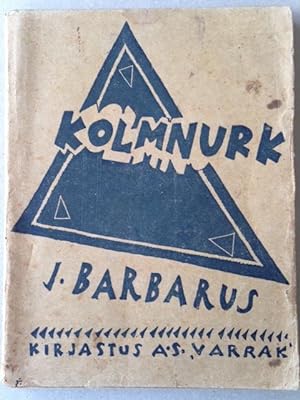
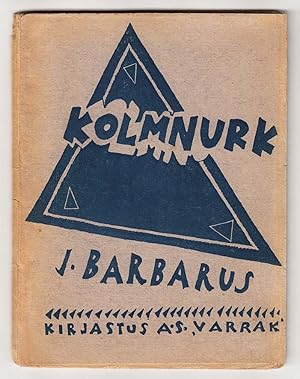
![Imagen del vendedor de Katastroofid. (1919-1920). [Disasters. (1919-1920).] a la venta por Földvári Books](https://pictures.abebooks.com/inventory/md/md16745803164.jpg)
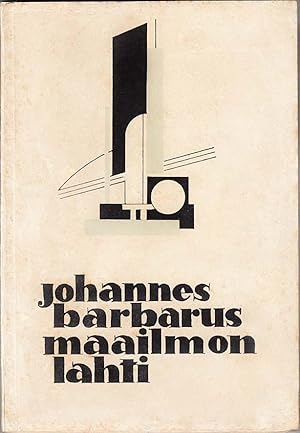
![Imagen del vendedor de Fata-Morgana [Poetry Collection] a la venta por Baltic Bouquiniste](https://pictures.abebooks.com/inventory/md/md22556661786.jpg)
![Imagen del vendedor de Katastroofid : 1919-1920 (Catastrophes : 1919-1920) [Poetry Collection] a la venta por Baltic Bouquiniste](https://pictures.abebooks.com/inventory/md/md22686467465.jpg)
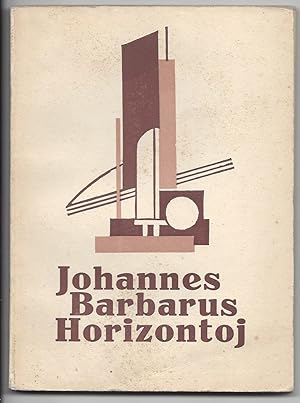
![Imagen del vendedor de [ESTONIAN EXPRESSIONISM ? LITTLE-KNOWN FEMALE ARTIST] Looming [Creation], I (all published). a la venta por Penka Rare Books and Archives, ILAB](https://pictures.abebooks.com/inventory/md/md31769621107.jpg)
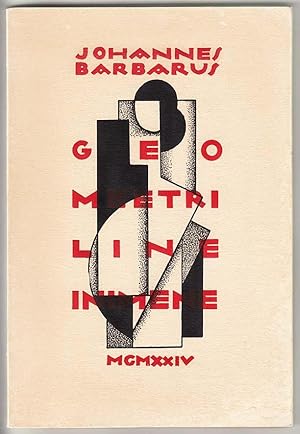
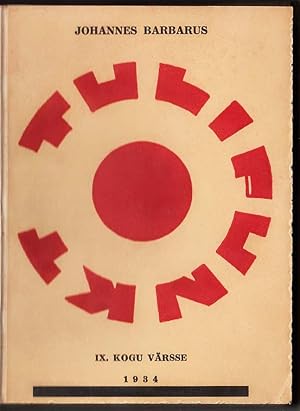
![Imagen del vendedor de [ESTONIAN AVANT-GARDE] Geomeetriline inimene. VI kogu värsse [Geometrical man. 6th book of poems]. a la venta por Penka Rare Books and Archives, ILAB](https://pictures.abebooks.com/inventory/md/md31769617413.jpg)